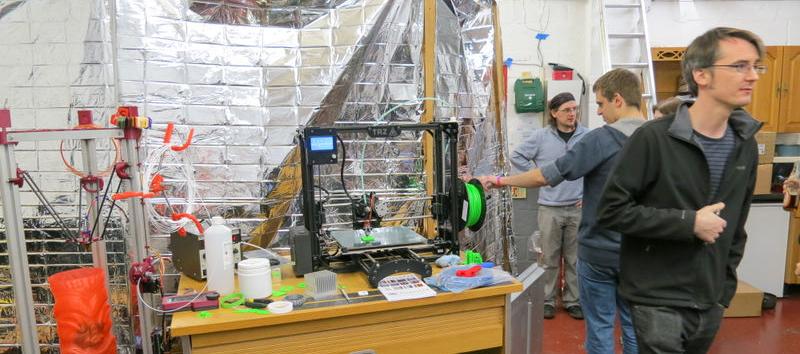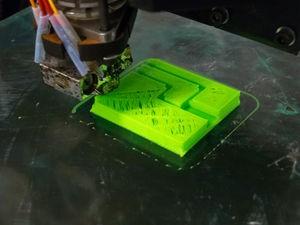
Philip Crump
Philip Crump is a recent graduate of the University of Southampton with a BEng in Electronic Engineering who’s also into amateur radio, electronics, and programming.
While his full-time gig is as a Lead Hardware Engineer at Telemetricor Limited, he’s also a Volunteer RF Engineering Consultant for Southampton University’s UOS3 Cubesat Project. Along with all those pursuits, Crump is also a photographer who needed a camera that would operate in the low temperatures environment encountered at altitude.
But here’s the problem: Crump was disappointed when he did cold-temperature battery tests with his Canon SD1000 camera. It seems once the batteries in the camera were chilled, they’d only operate for some 34 minutes at a time versus the nearly five hours they’d function at room temperature.
So Crump used 3D printing to build an alternative power supply solution that would work in icy temperatures. His Canon SD1000 doesn’t accept being powered up via its USB port or provide additional accessory sockets, but fortunately, the camera’s battery door does include a hole for wiring. So Crump built what he calls a “fake battery” for the camera which uses a DC supply. As the balloon which would carry his camera aloft already includes a battery pack, Crump’s plan was to tap into that source to power his camera.
That led the designer to create a 3D printed battery emulator that takes the place of the stock battery pack. Bare contact wires inside t he holder run out of the camera and then to a voltage regulator which converts the six-volt output of the balloon battery pack down to the 3.9 volts his camera needs to operate correctly.
he holder run out of the camera and then to a voltage regulator which converts the six-volt output of the balloon battery pack down to the 3.9 volts his camera needs to operate correctly.
Crump says one major challenge of the project was to be certain that his design worked to make a reliable connection with the battery contacts deep inside the camera. His answer was to build a 3D printed, battery-sized holder that would fit snugly in the limited space available.
He got in contact with the guys at So Make It, a Maker and Hackerspace in Southampton, who let him usea Lulzbot Taz and print the model he created in OpenSCAD. You can check out Crump’s solution and find out where to get the files at his website, philcrump.co.uk.
Have you heard of, or created yourself, a solution to a problem with an existing product using 3D printing? Let us in on your solution in the 3D Printed Camera Battery Emulator forum thread on 3DPB.com.

Subscribe to Our Email Newsletter
Stay up-to-date on all the latest news from the 3D printing industry and receive information and offers from third party vendors.
You May Also Like
NSF Awards Kentucky $1M for Advanced Manufacturing
The National Science Foundation has awarded a $1 million grant to the University of Louisville for the Advancing Manufacturing and Building Construction Technologies (NSF AMT) project. This initiative is part...
3D Printing News Briefs, May 11, 2024: 3D Printed Stent, Tower, Sculptures, & More
We’re starting off with medical research in today’s 3D Printing News Briefs, as researchers in Korea used CT images and 3D printing to fabricate an educational simulator for a mastoidectomy....
3D Printing Unpeeled: Wind Turbines, Probiotics and Lenses
TPI Composites, ORNL and Ingersoll Rand are working to make wind turbine tooling segments that can be 18.3 meters long. These elements also include resistive wires that help keep the...
Tethon 3D Releases Cost-effective Bioprinter
Tethon 3D, known for its ceramic-loaded DLP materials, custom resins, and DLP 3D printers, has recently released a bioprinter. Vat polymerization printers like DLP systems have been widely used by...
































